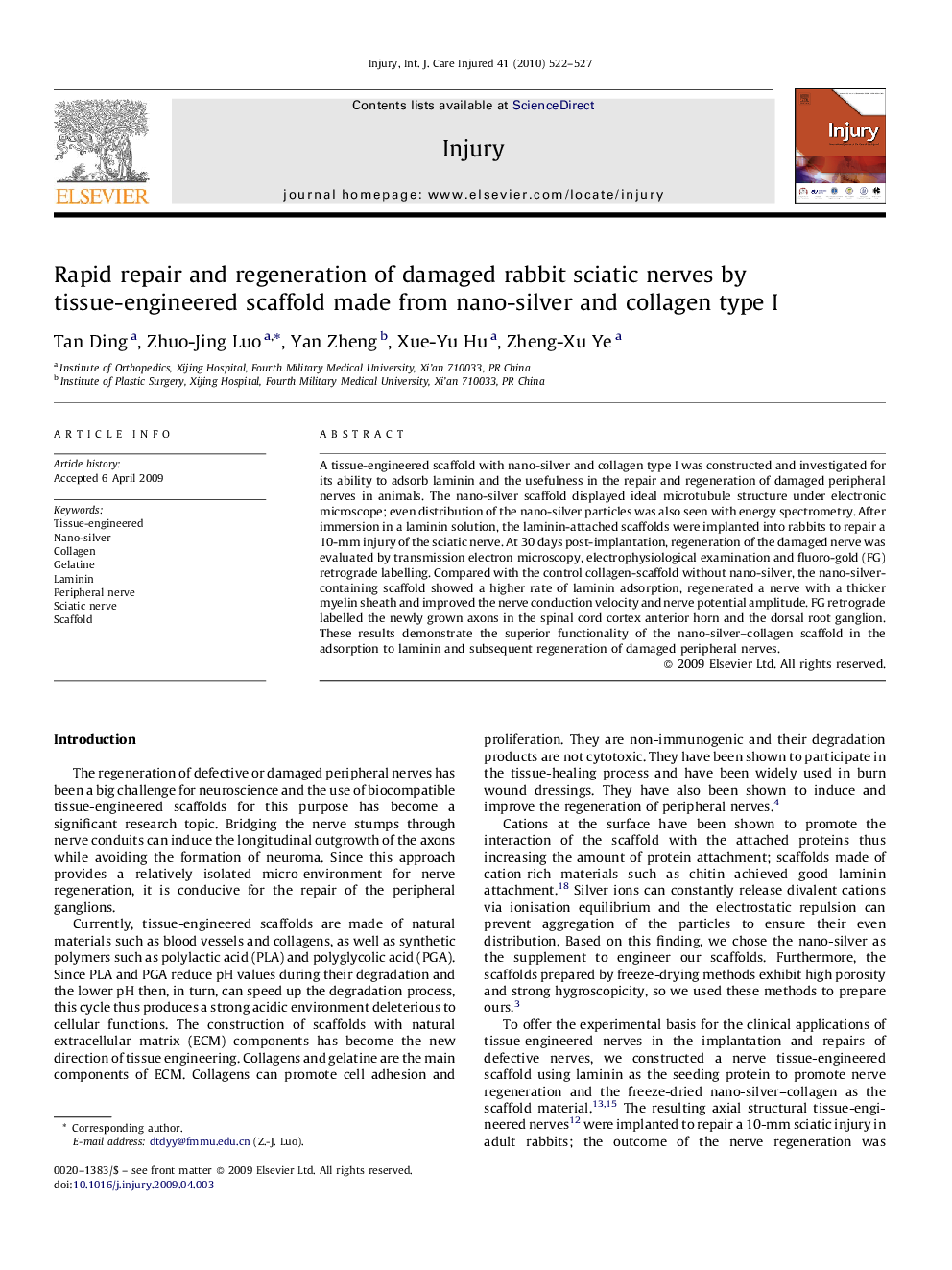| Article ID | Journal | Published Year | Pages | File Type |
|---|---|---|---|---|
| 3241469 | Injury | 2010 | 6 Pages |
A tissue-engineered scaffold with nano-silver and collagen type I was constructed and investigated for its ability to adsorb laminin and the usefulness in the repair and regeneration of damaged peripheral nerves in animals. The nano-silver scaffold displayed ideal microtubule structure under electronic microscope; even distribution of the nano-silver particles was also seen with energy spectrometry. After immersion in a laminin solution, the laminin-attached scaffolds were implanted into rabbits to repair a 10-mm injury of the sciatic nerve. At 30 days post-implantation, regeneration of the damaged nerve was evaluated by transmission electron microscopy, electrophysiological examination and fluoro-gold (FG) retrograde labelling. Compared with the control collagen-scaffold without nano-silver, the nano-silver-containing scaffold showed a higher rate of laminin adsorption, regenerated a nerve with a thicker myelin sheath and improved the nerve conduction velocity and nerve potential amplitude. FG retrograde labelled the newly grown axons in the spinal cord cortex anterior horn and the dorsal root ganglion. These results demonstrate the superior functionality of the nano-silver–collagen scaffold in the adsorption to laminin and subsequent regeneration of damaged peripheral nerves.
